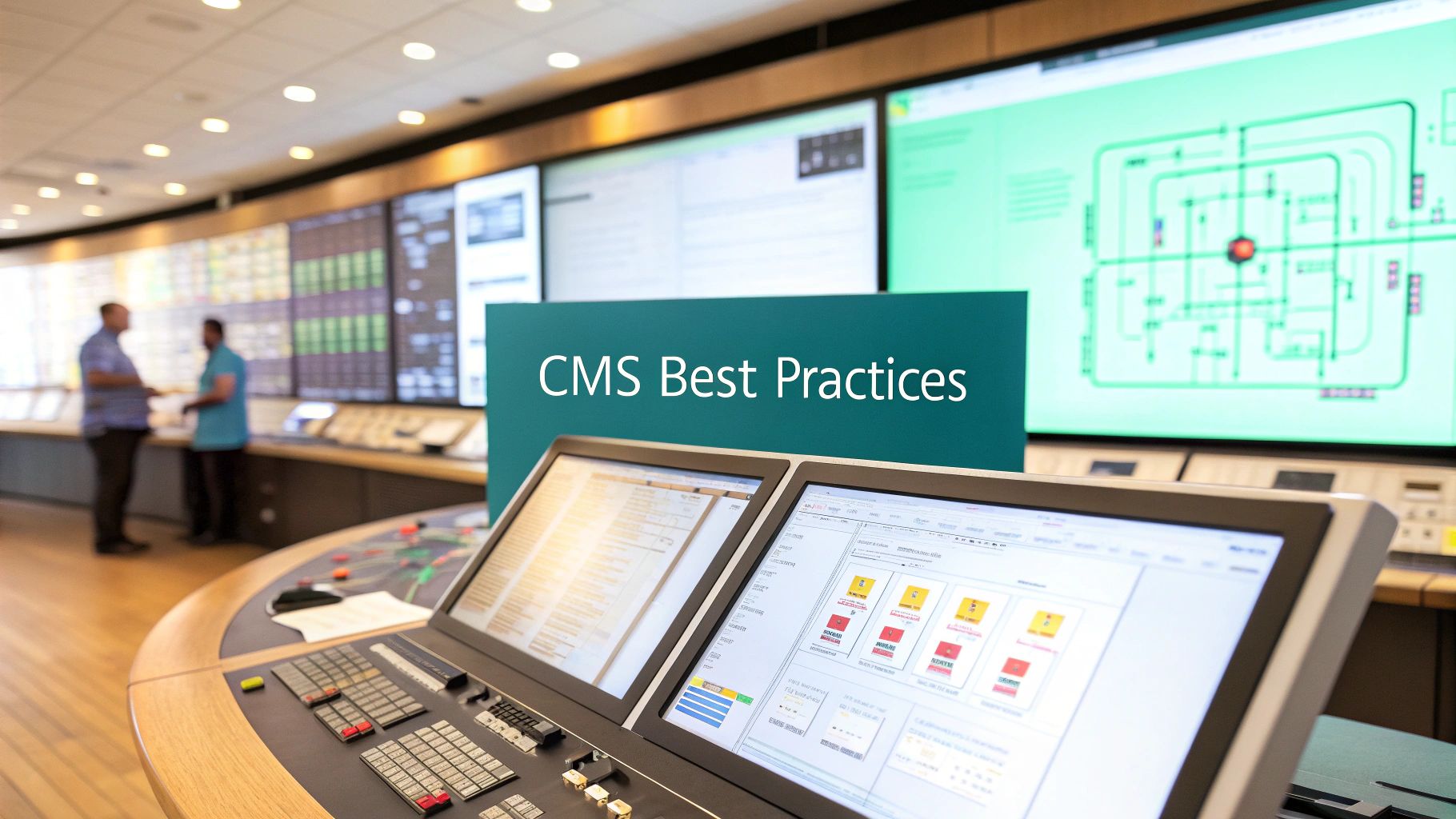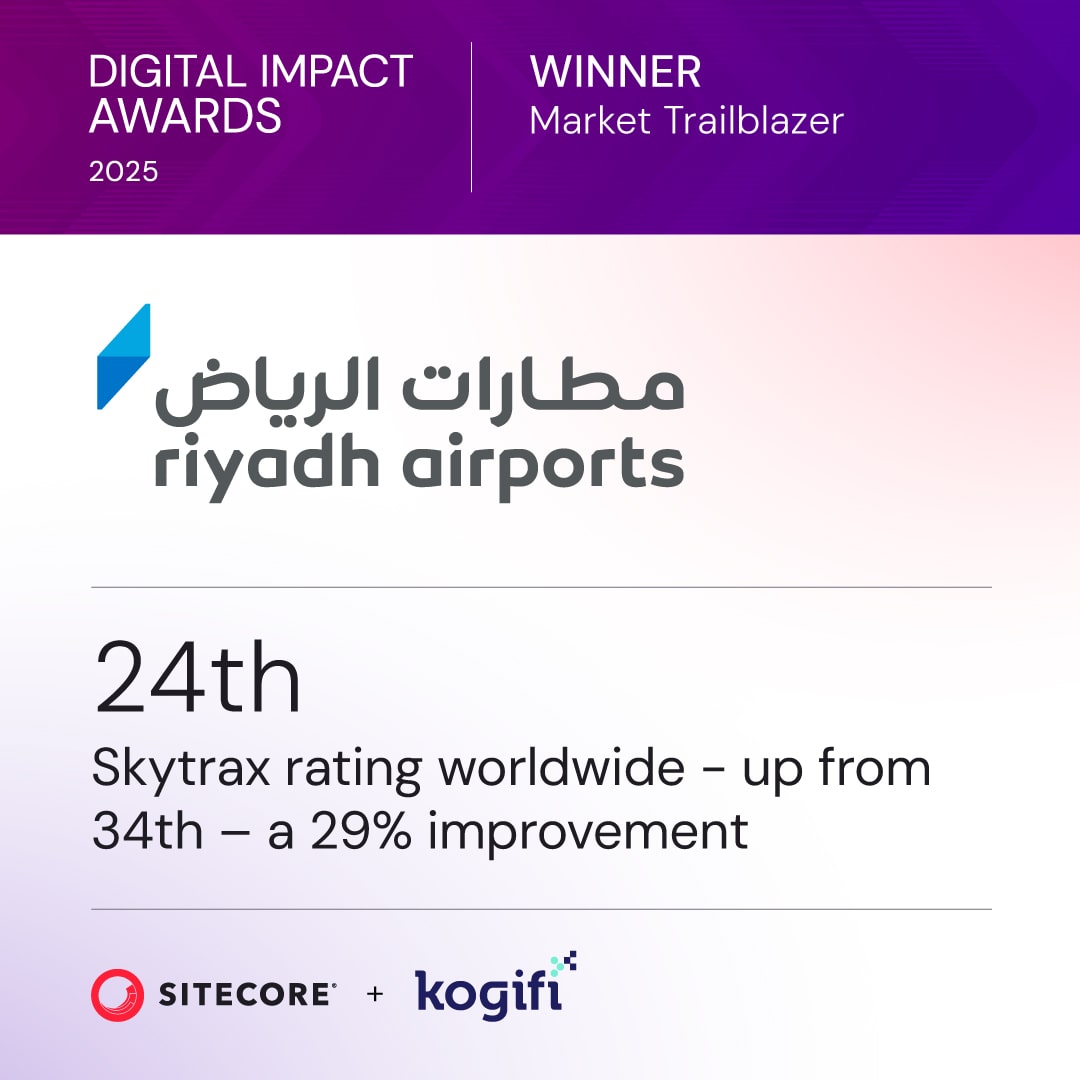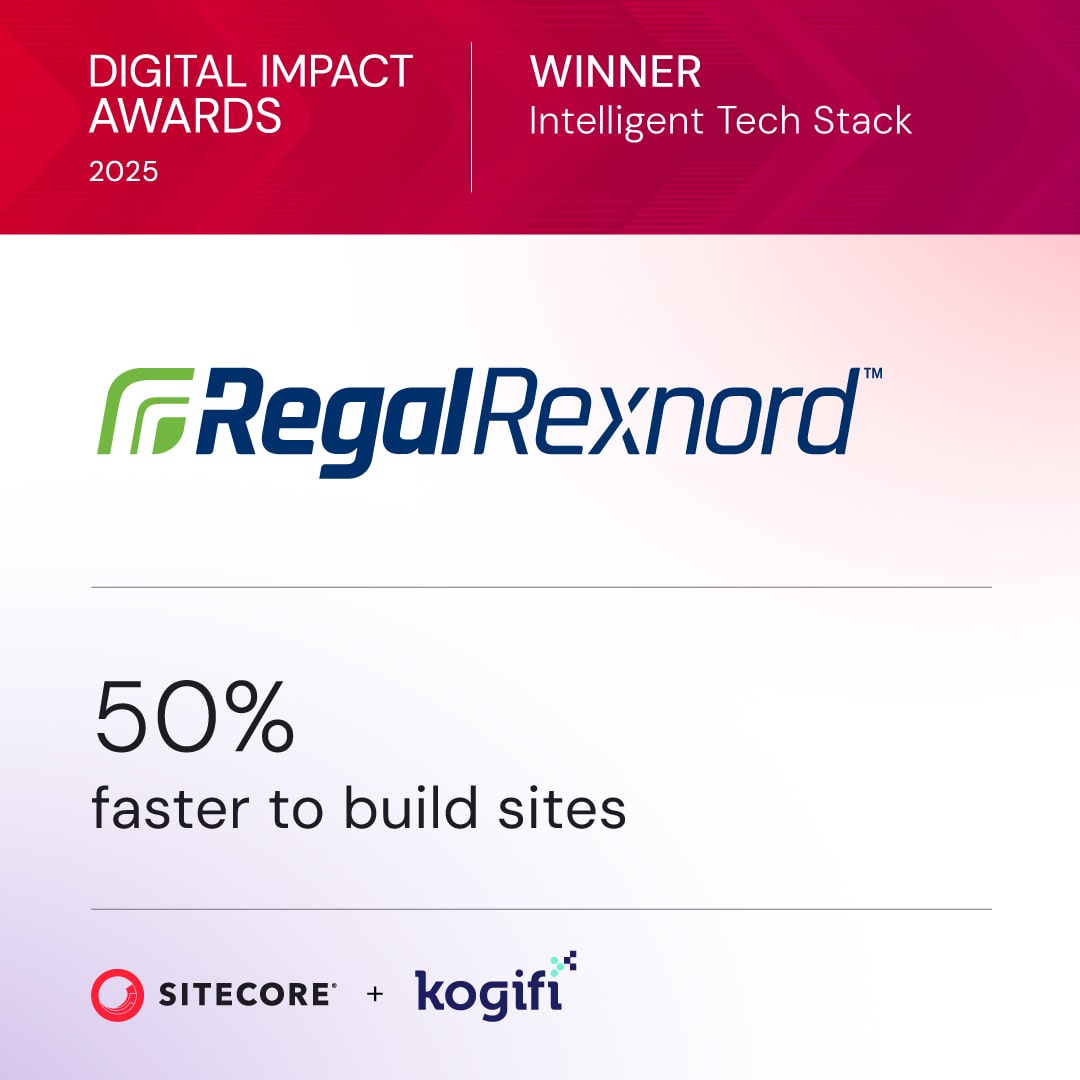In many enterprises, “good enough” content management leads to fragmented customer journeys and missed revenue. Achieving true digital maturity demands a strategic, platform-aware approach tailored to Sitecore’s composable DXP and SharePoint’s collaborative ecosystem. This guide turns best practices into actionable steps so you can transform your CMS into an intelligent engine for personalized, omnichannel engagement.
You’ll discover 10 essential content management best practices:
- Establish a Clear Content Strategy
- Implement a Centralized Content Management System
- Develop a Content Governance Framework
- Conduct Comprehensive Audience Research and Segmentation
- Optimize for Search Engines and User Intent
- Establish a Consistent Editorial Calendar
- Create High-Quality, Original Content
- Implement Analytics and Performance Measurement
- Enable Personalization and Dynamic Content
- Maintain Content Quality Control and Regular Updates
You’ll also get targeted guidance on taxonomy design, metadata schemes, localization workflows and SEO tactics to align with user intent. Each section ties back to content management best practices that deliver measurable impact.
Each section provides Sitecore-specific tips drawn from real scenarios, plus SharePoint solutions for enterprise teams. Expect platform pointers, governance checklists, taxonomy blueprints and migration roadmaps. Real-world examples illustrate common pitfalls and proven fixes.
For organizations partnering with Kogifi, mastering these principles is key to unlocking the full ROI of your technology investment.
To understand how artificial intelligence can streamline your content creation processes and integrate into a modern DXP, explore AI for content creation.
Dive in to gain practical frameworks, implementation details and a final checklist that ensures your content supply chain supports growth, efficiency and engaging user experiences.
1. Architecting a Strategic Governance Framework
Effective content management begins with a robust governance framework that defines roles, workflows, and standards. This isn't about creating bureaucracy; it's about establishing clarity and control to ensure brand consistency, compliance, and operational efficiency across your digital properties. For complex platforms like Sitecore, a well-defined governance model is non-negotiable for managing multi-site, multi-lingual, and multi-brand environments seamlessly.
Why It's a Top Priority
A governance framework acts as the constitution for your digital content ecosystem. Without it, even the most powerful DXP can descend into chaos, leading to inconsistent branding, legal risks, and duplicated efforts. This framework is a cornerstone of any successful content management best practices strategy, providing the structure needed to scale operations while maintaining quality. It ensures every piece of content aligns with business objectives, from creation to archival.
Implementing Your Governance Model
To build a practical framework, start by defining key components. This is not a one-size-fits-all process; it must be tailored to your organization's specific needs and technology stack.
Role-Based Access Control (RBAC): Define clear roles like Content Author, Editor, Publisher, and Administrator. In Sitecore, leverage the Security Editor to map these business roles directly to platform roles, granting granular permissions for specific actions (e.g., editing a field, approving a workflow state, publishing to a specific target). This prevents unauthorized changes and protects critical content.
Content Workflows: Map out the entire content lifecycle from draft to publication and eventual retirement. Use Sitecore’s workflow engine to automate these stages. For example, a simple workflow might be: Draft -> Awaiting Approval -> Approved for Web -> Published. More complex scenarios could include legal and compliance review steps, ensuring all content is vetted before going live.
Content Standards and Policies: Create a centralized document or SharePoint site outlining style guides, tone of voice, SEO requirements, accessibility standards (WCAG), and metadata policies. Enforce these standards within your CMS. For instance, make the "Meta Description" field mandatory in Sitecore templates to ensure SEO best practices are followed consistently.
2. Implement a Centralized Content Management System (CMS)
Using a centralized Content Management System (CMS) means adopting a single platform to create, manage, store, and deliver all digital content. This approach breaks down content silos that often form when different teams use disparate tools, establishing a single source of truth for all brand assets. For organizations managing complex digital ecosystems, platforms like SharePoint for internal collaboration or Sitecore for external digital experiences are fundamental to maintaining control and consistency.

Why It's a Top Priority
A centralized CMS is the operational hub for your digital strategy. Without it, organizations face rampant inefficiencies, version control nightmares, and a fragmented brand presence. Centralization streamlines content operations, enhances security, and empowers teams to collaborate effectively. This is a critical component of content management best practices, as it provides the foundational technology needed to execute more advanced strategies like personalization and omnichannel delivery, which are core strengths of platforms like the Sitecore Experience Platform (XP).
Implementing Your Centralized System
Choosing and implementing a CMS requires a strategic approach tailored to your business goals, technical capabilities, and future growth plans.
Select the Right Platform: Evaluate platforms based on your specific needs. For enterprise-level marketing and personalization, a Digital Experience Platform (DXP) like Sitecore is ideal. For robust document management and internal collaboration, Microsoft SharePoint is a powerful choice. Your selection should align with your existing technology stack and scalability requirements.
Establish Clear Governance: Before migration, define the governance policies discussed in the previous section. This includes establishing metadata standards, tagging conventions, and user roles within the new system. In SharePoint, for example, you can use Managed Metadata Services to create a formal taxonomy that is applied consistently across all sites and libraries.
Plan for Training and Adoption: Technology is only effective if people use it correctly. Develop a comprehensive training program for all users, from content authors to administrators. Create accessible documentation and provide ongoing support to ensure teams are comfortable with the new workflows and features. For more detailed information, you can learn more about the benefits of a CMS on kogifi.com.
3. Develop a Content Governance Framework
A robust content governance framework establishes the essential policies, processes, and accountability structures that dictate who can create, edit, approve, and publish content. This is not about introducing restrictive bureaucracy; it’s about creating clarity and control to ensure brand consistency, legal compliance, and operational efficiency. For enterprises using platforms like Sitecore, a formal governance model is critical for managing complex digital estates with multiple sites, languages, and brand identities.
Why It's a Top Priority
A governance framework serves as the foundational rulebook for your entire digital content ecosystem. Without it, even the most advanced DXP can become a chaotic landscape of inconsistent messaging, duplicated efforts, and significant compliance risks. This framework is a core component of any effective content management best practices strategy, providing the structure to scale content operations while maintaining high standards. It guarantees that every asset, from creation to archival, supports overarching business goals.
Implementing Your Governance Model
Building a practical framework requires defining key components tailored to your organization's unique requirements and technology stack.
Role-Based Access Control (RBAC): Define clear roles such as Content Author, Editor, Legal Reviewer, and Publisher. In Sitecore, use the Security Editor to map these business roles directly to platform permissions, granting precise control over actions like editing specific fields, approving workflow stages, or publishing to certain web properties. This is crucial for industries like financial services where strict regulatory compliance is mandatory.
Content Workflows: Systematically map the entire content lifecycle from initial draft to publication and eventual archival. Leverage Sitecore’s workflow engine to automate these stages. A typical workflow could be: Draft -> Awaiting Approval -> Approved -> Published. For healthcare providers, this might include a mandatory HIPAA compliance review step, ensuring all content is vetted before release.
Standards and Policies: Centralize your guidelines for style, tone of voice, SEO, accessibility (WCAG), and metadata. Enforce these rules within your CMS. For example, make the "Alternative Text" field for images a mandatory requirement in your Sitecore templates to ensure accessibility best practices are consistently applied. This structured approach is vital for optimizing your entire content supply chain.
4. Conduct Comprehensive Audience Research and Segmentation
Creating impactful content requires a deep understanding of who you are creating it for. This best practice involves systematically researching your target audiences to create detailed segments based on demographics, behaviors, and motivations. This foundational work moves beyond assumptions, ensuring every piece of content is relevant, valuable, and directly addresses the specific needs and pain points of distinct user groups. In a DXP like Sitecore, this segmentation is the fuel for powerful personalization and targeted campaigns.
Why It's a Top Priority
Without clear audience insights, content strategy is essentially guesswork. You risk creating generic content that resonates with no one, wasting resources and failing to drive engagement or conversions. A commitment to audience research is a core component of modern content management best practices, as it provides the data-driven foundation for personalization, messaging, and overall digital experience. It transforms your CMS from a simple content repository into a strategic tool for building meaningful customer relationships.
Implementing Your Audience Segmentation
A practical approach combines quantitative data with qualitative insights to build a holistic view of your audience. This process should be iterative, not a one-time project.
Develop Data-Driven Personas: Go beyond basic demographics. Use analytics from platforms like Sitecore Analytics to understand user behavior on your site. Which content do they consume? What paths do they take? Supplement this quantitative data with qualitative insights from customer interviews, surveys, and feedback from your sales team to build rich, actionable personas.
Leverage Platform Segmentation Tools: Use your DXP's built-in capabilities to bring these personas to life. In Sitecore, you can create profile cards, pattern cards, and goals to track user interactions and dynamically assign them to specific segments. For example, a user who repeatedly visits product specification pages and downloads datasheets can be automatically segmented into a "Technical Evaluator" profile, allowing you to serve them case studies and comparison guides.
Validate and Refine Continuously: Personas are not static. Use A/B testing and review analytics regularly to validate your assumptions. Are you seeing higher engagement from content targeted at your "IT Manager" persona? If not, revisit the persona's defined pain points and content preferences. Share these findings across marketing, sales, and product teams to ensure organizational alignment and a consistent customer experience.
5. Optimize for Search Engines and User Intent (SEO)
Search Engine Optimization is the practice of enhancing your content and technical setup to improve visibility and ranking on search engine results pages (SERPs). It's not just about attracting traffic; it’s about attracting the right traffic by deeply understanding and satisfying user intent. In the context of a DXP like Sitecore, SEO is a fundamental layer of content strategy, ensuring that the valuable experiences you build are discoverable by your target audience at the precise moment of need.
Why It's a Top Priority
Failing to optimize for search is like building a state-of-the-art retail store with no doors. Even the most compelling content or personalized user journey is ineffective if no one can find it. Integrating SEO into your content management best practices ensures a continuous stream of qualified organic traffic, builds brand authority, and maximizes the return on your content creation investment. For enterprise platforms, this means every component, from a blog post to a product page, must be engineered for search visibility.
Implementing Your SEO Model
A successful SEO strategy requires a blend of technical diligence, on-page optimization, and user-focused content creation. Modern platforms provide tools to embed these practices directly into your workflows.
Technical SEO Foundations: Ensure your site is technically sound for search engine crawlers. Within Sitecore, use modules like the Sitecore Experience Accelerator (SXA) which automatically handles many technical SEO elements, such as generating sitemaps, managing robots.txt files, and creating clean, crawlable URL structures. Regularly audit for mobile-friendliness and core web vitals performance, as these are critical ranking factors.
On-Page Content Optimization: Equip your content authors with the tools to succeed. Customize Sitecore templates to include mandatory SEO fields like "Meta Title," "Meta Description," and "Canonical URL." You can even integrate third-party tools via API to provide real-time SEO scoring and keyword suggestions directly within the content editor interface, guiding authors to create optimized content from the start.
Aligning with User Intent: Move beyond simple keyword matching to address the "why" behind a search query. Use tools like Sitecore Content Hub to plan and create content pillars around core topics that answer informational, navigational, or transactional queries. For example, if a user searches for "digital asset management comparison," create a comprehensive landing page that not only features your product but also provides a fair comparison, satisfying their research-oriented intent and building trust.
6. Establish a Consistent Editorial Calendar and Publishing Schedule
Strategic content management is not just about what you create, but when and how you deliver it. An editorial calendar transforms your content strategy from a series of disjointed activities into a coordinated, predictable engine for audience engagement. It’s a master plan that dictates what content will be published, on which channels, and at what time, ensuring a steady stream of value that builds anticipation and loyalty.
Why It's a Top Priority
An editorial calendar is the operational backbone of your content marketing efforts. It eliminates last-minute scrambles for content, prevents publishing gaps, and ensures your team is aligned on priorities. This forward-looking approach allows for better resource allocation, strategic theme planning, and alignment with key business events like product launches or seasonal campaigns. For platforms like Sitecore, where you might be managing content across multiple sites, a centralized calendar is crucial for orchestrating a cohesive brand narrative.
Implementing Your Editorial Calendar
Building an effective calendar involves more than just plugging dates into a spreadsheet. It requires a strategic approach to planning, execution, and optimization.
Centralize Planning and Scheduling: Use a dedicated tool or a shared platform like a SharePoint list to create a single source of truth. The calendar should track key details: content title, author, target persona, publish date, target channel (e.g., website, blog, social media), and status. In Sitecore Content Hub, the Content Marketing Platform (CMP) module provides sophisticated tools for building and managing this calendar directly within your content ecosystem.
Integrate with Your CMS Workflow: Connect your calendar directly to your content management processes. When a blog post is due, its corresponding item in Sitecore should already be in a "Ready for Review" state within its workflow. You can use Sitecore's scheduling feature to set a precise publish date and time, automating the final step and ensuring content goes live exactly when planned, even outside of business hours.
Plan for Agility and Variety: A rigid calendar can stifle creativity. Plan your core "pillar" content 3-6 months in advance, but build in approximately 20% flexibility to accommodate timely, trend-driven pieces. Vary content formats to maintain audience interest, scheduling a mix of blog posts, case studies, videos, and interactive content. This is a key principle of effective content management best practices.
7. Create High-Quality, Original Content
A powerful CMS is only as effective as the content it manages. Prioritizing the creation of high-quality, original content is a fundamental best practice that moves beyond simple information delivery. It involves producing well-researched, valuable assets that establish authority, build audience trust, and differentiate your brand in a saturated digital landscape. This commitment to quality over quantity is what separates market leaders from the noise.

Why It's a Top Priority
In an era of content overload, originality is your competitive advantage. Duplicated or low-effort content fails to engage users, hurts SEO rankings, and erodes brand credibility. High-quality content, such as the deeply technical documentation found on sitecore.com, serves as a powerful magnet for attracting and retaining target audiences. Integrating this principle into your content management best practices ensures your digital platform becomes a destination for authoritative information, not just a repository of marketing messages.
Implementing Your Content Quality Strategy
Creating consistently high-quality content requires a strategic and systematic approach, supported by your content management system. This process should be embedded into your editorial workflows and technology stack.
Invest in Original Research and Expertise: Instead of summarizing existing articles, create unique value. Conduct proprietary surveys and publish the findings, or interview internal subject matter experts to offer authentic perspectives. In SharePoint, you can create a dedicated "SME Hub" site where experts can easily contribute draft content, which editors can then refine and publish through a formal review process.
Establish a Rigorous Editorial Process: Implement a multi-stage review cycle within your CMS workflow to ensure accuracy, clarity, and brand alignment. A Sitecore workflow can be configured to include stages like Technical Review -> Editorial Review -> SEO Optimization -> Final Approval. This ensures every piece is vetted by the right stakeholders before it goes live, maintaining a high standard of quality.
Enforce Content Freshness: High-quality content is not static; it requires maintenance. Use your CMS to manage content lifecycles effectively. For instance, set up automated reminders in SharePoint or Sitecore for content owners to review and update key pages annually. Regularly refreshing high-performing assets with new data and insights keeps them relevant and protects their search engine rankings.
8. Implement Analytics and Performance Measurement
Content creation without measurement is like navigating without a compass. Implementing a comprehensive analytics strategy transforms content management from a creative exercise into a data-driven business function. This involves setting up tools and processes to track how your content performs against specific business objectives, enabling you to prove ROI, refine your strategy, and make smarter decisions. Within an advanced DXP like Sitecore, integrating analytics is fundamental for unlocking personalization and optimizing the entire customer journey.
Why It's a Top Priority
Analytics provide the critical feedback loop in your content lifecycle. Without it, you're operating on assumptions, unable to determine what resonates with your audience or what drives conversions. This data is the foundation of all content optimization efforts and is a core component of modern content management best practices. It allows you to move beyond vanity metrics and connect content performance directly to business outcomes, such as lead generation, customer engagement, and revenue. In platforms like Sitecore, this data directly fuels personalization engines, making your digital experiences more relevant and effective.
Implementing Your Measurement Model
Building an effective analytics framework requires defining what to measure and how to measure it. Tailor your approach to your specific business goals and leverage the capabilities of your CMS.
Define and Track Key KPIs: Move beyond page views. Align your KPIs with business goals. Examples include Conversion Rate on landing pages, Engagement Value per visit (a key metric in Sitecore xDB), Time on Page for articles, and Marketing-Qualified Leads (MQLs) generated from content downloads. Document these KPIs and ensure your team understands what success looks like.
Integrate Analytics Tools: Connect your CMS with robust analytics platforms. For Sitecore users, this means fully leveraging the Sitecore Experience Analytics and Experience Profile to track user interactions, goal completions, and personalization effectiveness on-site. You can also integrate external analytics to ensure UTM parameters are used consistently across all campaigns to track traffic sources accurately.
Establish a Reporting Cadence: Data is only useful if it's reviewed and acted upon. Create a rhythm for reporting, such as weekly performance dashboards for content teams and monthly KPI reviews for stakeholders. Use tools like Sitecore Experience Analytics or external platforms like Power BI to visualize data and identify trends, informing your next content sprint.
9. Enable Personalization and Dynamic Content
Modern content management extends beyond static pages to deliver tailored experiences for individual users. Enabling personalization means dynamically altering content based on audience data like behavior, location, or past interactions. This transforms your digital platform from a one-way broadcast into a two-way conversation, significantly improving engagement and driving conversions. In platforms like Sitecore, this is a core capability, not an afterthought.
Why It's a Top Priority
In a crowded digital landscape, relevance is currency. Generic content fails to capture attention, but personalized experiences make users feel understood and valued. This is a fundamental content management best practice for increasing key metrics like time on site, lead generation, and customer loyalty. It leverages user data to serve the right content to the right person at the right time, creating a more effective and efficient customer journey.
Implementing Your Personalization Strategy
A successful personalization strategy is built iteratively, starting with broad segments and refining over time. It requires a clear plan grounded in data and supported by the right technology. Learn more about the fundamentals of website personalization.
Start with Segmentation and Rules-Based Personalization: Begin by identifying key audience segments. In Sitecore, you can use the List Manager to create static or dynamic segments. Apply rules-based personalization to components on a page. For example, show a "Request a Demo" call-to-action to visitors identified as being from a target industry (based on IP lookup) while showing a "Career Opportunities" component to all other visitors.
Leverage Behavioral Data: Track user interactions to build profiles. Sitecore's Experience Platform (XP) excels at this, collecting data on every click, download, and page view. Use this data to trigger personalization. For instance, if a user has viewed three pages in your "Cloud Services" section, you can personalize the homepage banner on their next visit to feature a relevant cloud solutions whitepaper.
Test and Optimize: Personalization is not a "set it and forget it" activity. Use A/B or multivariate testing to validate your hypotheses. Sitecore's Experience Optimization allows you to test different content variations for a specific audience segment to determine which one performs better against a defined goal, like form submissions. This data-driven approach ensures your efforts are yielding tangible results.
10. Maintain Content Quality Control and Regular Updates
Publishing content is not the final step; it's the beginning of its lifecycle. Implementing systematic processes for content quality control and regular updates is essential for maintaining brand credibility, user trust, and search engine performance. Stale, inaccurate, or broken content actively harms your digital presence, making a proactive maintenance strategy a core component of effective content management best practices.
Why It's a Top Priority
Outdated content erodes user trust and diminishes your brand's authority. For audiences, encountering broken links or incorrect information creates a poor experience, while for search engines, it signals a poorly maintained site, negatively impacting rankings. Regular audits and updates ensure your content remains accurate, relevant, and valuable, protecting your investment and ensuring it continues to deliver results long after its initial publication.
Implementing Your Maintenance Model
A structured content maintenance plan transforms a reactive, chaotic process into a proactive, manageable one. This model should be integrated directly into your operational calendar and CMS capabilities.
Schedule Regular Content Audits: Systematically review your content inventory on a quarterly or semi-annual basis. Use analytics to identify high-traffic, low-performing pages, outdated statistics, and irrelevant information. In platforms like Sitecore, you can use custom reports or integrate with external tools to pull content performance data and identify pages that need immediate attention.
Create Content Refresh Checklists: Standardize the update process with checklists tailored to different content types. For a blog post, this might include updating statistics, checking for broken links, refreshing CTAs, and improving on-page SEO. In SharePoint, a versioning history can be used to track what was changed, by whom, and when, adding a layer of governance to the update process.
Leverage CMS for Maintenance: Use your CMS to facilitate updates. In Sitecore, you can set review dates on content items that trigger notifications in a content editor’s workbox, reminding them to audit a page. For expired promotions or seasonal content, use Sitecore's publishing restrictions to automatically unpublish content on a specific date, preventing outdated information from remaining live.
10-Point Comparison: Content Management Best Practices
Your Path to Content Management Excellence
Navigating the landscape of modern digital experiences requires more than just a powerful Content Management System; it demands a strategic, disciplined approach. We've journeyed through the critical pillars of success, from establishing a foundational content strategy and a robust governance framework to the advanced execution of personalization, omnichannel delivery, and data-driven performance measurement. The path from a simple content repository to a dynamic engine for business growth is paved with these integrated content management best practices.
Adopting these principles is not a one-time project but a continuous cycle of refinement and optimization. Your CMS, whether a sophisticated Digital Experience Platform like Sitecore or a collaborative hub like SharePoint, is the vehicle. Your strategy is the map, and your governance is the set of traffic laws that ensure a smooth journey. Without them, even the most advanced technology can lead to content chaos, brand inconsistency, and missed opportunities.
From Theory to Tangible Results
The real value emerges when these practices are woven into the fabric of your daily operations. Let’s distill the most crucial takeaways that bridge the gap between concept and execution:
Governance is Non-Negotiable: A clear governance model is the bedrock of content maturity. It defines roles, establishes workflows, and enforces standards, preventing your content ecosystem from descending into a digital "wild west." For Sitecore users, this means meticulously configuring security roles and workflow states. In SharePoint, it involves setting up precise library permissions and content approval processes.
Structure Precedes Scale: The importance of intelligent content modeling cannot be overstated. By breaking content down into reusable, structured components instead of monolithic "blobs," you unlock true omnichannel potential. This approach is fundamental to delivering consistent experiences across websites, mobile apps, and emerging channels, a core strength of platforms like Sitecore Content Hub.
Data is Your Co-Pilot: The era of "set it and forget it" content is over. Your analytics and KPIs are not just for quarterly reports; they are your real-time feedback loop. Use them to understand user behavior, validate your personalization rules in Sitecore, and measure content engagement in SharePoint. This data-driven mindset transforms your strategy from guesswork into a precise, results-oriented discipline.
Security and Performance are Foundational: All your strategic efforts can be instantly undermined by a security breach or a slow-loading page. Integrating security protocols and performance optimization into every stage of the content lifecycle, from creation to delivery, is essential for protecting your brand and ensuring a positive user experience.
Charting Your Next Steps
The journey to mastering these content management best practices is iterative. Start by assessing your current state of maturity against the principles outlined in this guide. Identify the most significant gaps and prioritize them based on their potential impact on your business goals. For instance, if brand inconsistency is a major issue, focus first on establishing a governance framework and a centralized component library.
To truly achieve content management excellence, it's vital to stay updated on the latest trends and architectural patterns. As you plan for the future, a deeper dive into evolving methodologies can provide a competitive edge. The insights in this guide on Content Management System Best Practices for 2025 offer valuable perspectives on where the industry is heading.
Ultimately, transforming your content operations is about empowering your teams, delighting your customers, and driving measurable growth. By committing to these best practices, you are not just managing content; you are architecting the future of your digital presence.
Ready to transform your content strategy into a powerful engine for growth? The expert teams at Kogifi specialize in architecting, implementing, and optimizing complex DXP solutions, particularly with Sitecore and SharePoint. Visit us to discover how we can help you implement these best practices and unlock the full potential of your digital ecosystem.








































